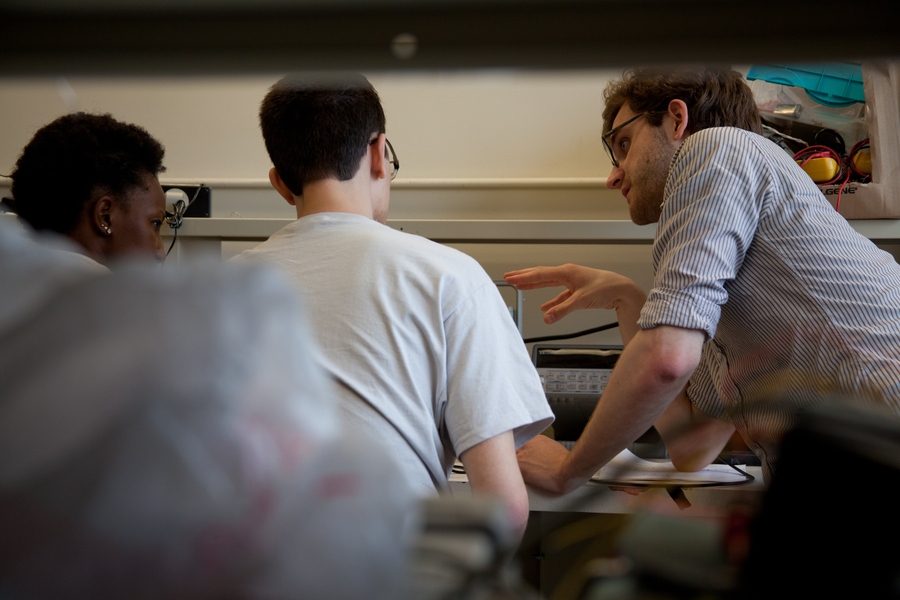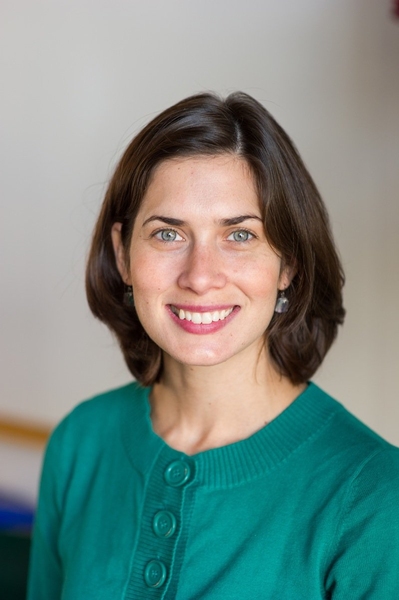Since the fall, instructors for Saturday Engineering Enrichment and Discovery (SEED) Academy — an MIT academic and career training program for high school students from Boston, Cambridge, and Lawrence — have participated in a series of workshops on how their students’ perceived stereotypes can become detrimental distractions. Bolstered by a generous grant from the 484 Phi Alpha Foundation and the MIT Office of Engineering Outreach Programs' (OEOP) increased focus on professional development, the training is now creating more inclusive classrooms.
Anique Olivier-Mason, an instructor in the Drennan Education Laboratory at MIT, leads the training, which focuses on a phenomenon called "stereotype threat." Stereotype threat is the perceived risk of confirming a negative stereotype, which can stem from such common attributes as race and gender, or even less obvious differences among individuals.
“Racism and sexism are major issues in the world, but they’re not the only things that can affect learning,” Olivier-Mason says. “There’s just a lot more of a student’s personal experience that can get in the way.” Anything from learning style to clothing to extracurricular activities can prevent a student from being fully engaged in the classroom, Olivier-Mason says.
SEED Academy Electronics Instructor Joe Steinmeyer, a PhD student in the Department of Electrical Engineering and Computer Science has witnessed subtle barriers to students’ engagement in his classroom. Steinmeyer often leverages music in his assigned projects to appeal to his students’ interests. It’s an effective technique that he says invigorates his students — high school seniors with busy schedules and other stress — to bring a new level of energy to their projects.
But sometimes, it can cause a hiccup in learning. “There are always really interesting class dynamics about who’s playing what,” Steinmeyer says. “Some students always have really good underground hip-hop and trade off all their tracks with each other. Others are nervous because they don’t have the same music choices, and maybe they think they don’t have as much musical taste.” Steinmeyer says this occasionally leads some students to be hesitant to test out their projects.
Steinmeyer counteracts his students’ insecurities by allowing them to form teams with their peers with whom they are most comfortable. He also emphasizes his own shortcomings to show that even MIT graduate students aren’t perfect. And he’s careful not to dismiss his students’ problems, especially by taking note of his vocal tone, when he provides feedback.
Steinmeyer’s response demonstrates just two lessons from Olivier-Mason’s workshop. By being aware of the tone and content of his feedback, Steinmeyer is giving what education researchers describe as “wise criticism,” or criticism in which instructors tell their students that they are capable of attaining a high level of success or achievement. And by highlighting his own shortcomings, Steinmeyer is “changing the narrative,” by demonstrating that people who struggle from time to time can still be successful.
Research also suggests that diversifying images in textbooks and in the classroom, to show that more types of people can be successful, is effective in combating stereotype threat.
Through educating SEED Academy staff on the pitfalls of stereotype threat, Olivier-Mason hopes to improve learning experiences. “SEED students are chosen because they are high performers, and the pressure they’re under can be similar to that of undergrads at MIT,” she says. Armed with the skills to combat stereotype threat, she says, “Instructors can break down barriers that prevent students from taking on the identity of scientists in the classroom.”







